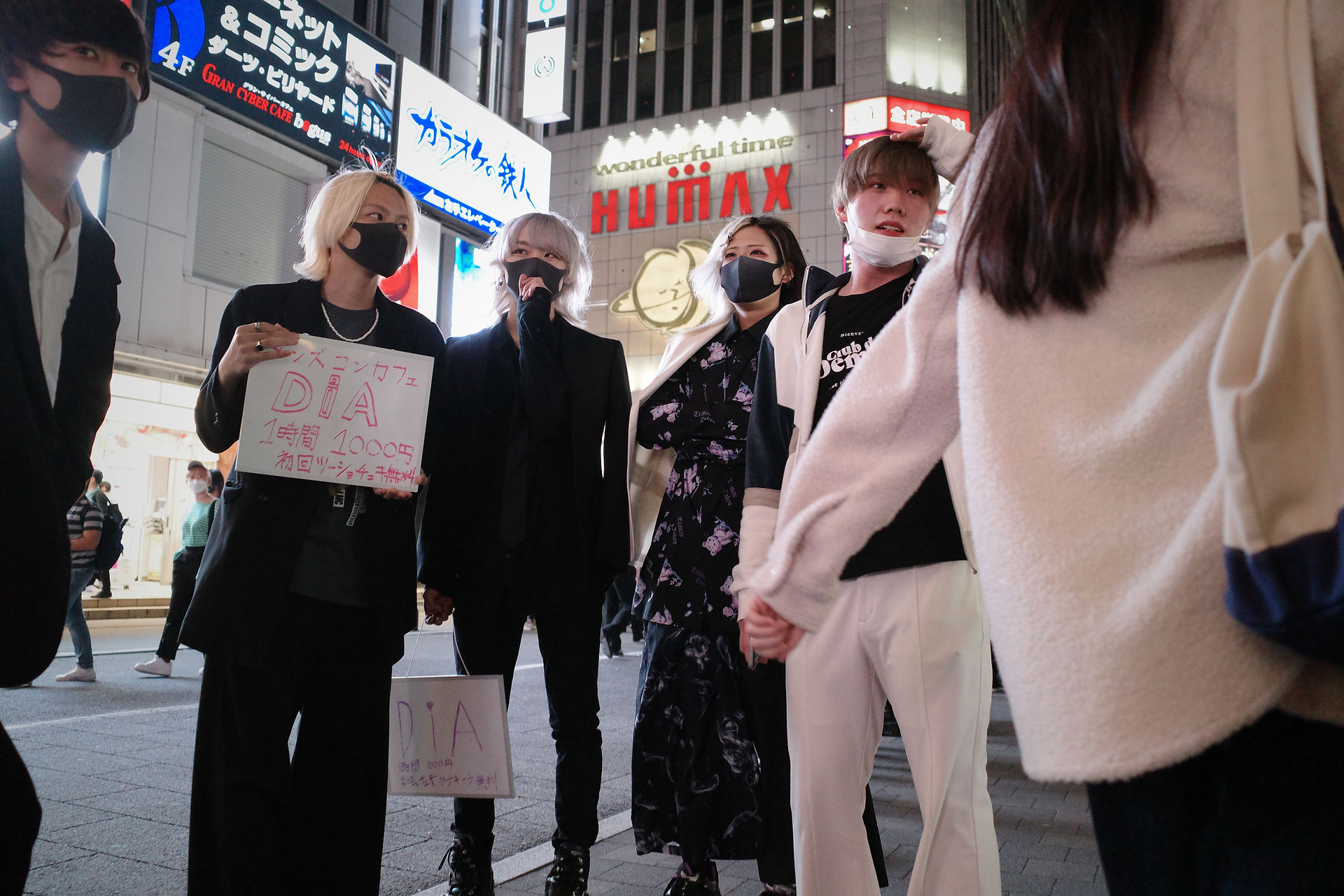
non-Verbal Communication
Body Gesture
by Mai
Introduction
Conversation and communicative motor acts work together in a synchronized way throughout the duration of a face-to-face conversation (Goman, 2011). Body gesture and body language act as an extension of the already present verbal communication, and adds to intended meanings. Body language and gestures as a catalyst for a more engaging and personable conversation is observable universally—the value behind verbal communication is not exclusive to the culture of Japan.
Especially if it’s the target’s first time interacting with this industry, first impressions and small details of the interaction can give the target a feeling of how they will be handled if they choose to accept the job. The addition of body gestures can make for a more natural and personal interaction and conversation.
Examples of Nonverbal Cues
This chart displays several common body gestures/hand gestures
Hands crossed
This can be a more standoffish body gesture, and can show defensiveness on the scout’s side. This can make it difficult for the scout and target to create a more close relationship
Hand symbols (thumbs up, etc.)
Displaying these symbols can be a gesture of friendliness. Lighthearted gestures alike can ease interactions with the targets.

Source: Recognize Nonverbal cues via YourDictionary.com
Hand gestures
Hand gestures can be a way to catch the attention of the target. Additionally, it can be a way to make the conversation appear more engaging.
Hand gestures can be a way to catch the attention of the target. Additionally, it can be a way to make the conversation appear more engaging.
Observation of scouts suggested that scouts who actively used their hands to make gestures while speaking to targets had a higher success rate—many of the observed unsuccessful scouts appeared to look more standoffish.

Mirroring body language
Mirroring body language is a way to show interest, attraction, and empathy (possibly all at once)(Goman, 2011). The act of mirroring another individual’s kinesics often acts as a way to communicate messages and expressions through symbols (Stefani, 2019). Scouts can mirror their targets’ body language to ease their interaction–showing the traits of a more personal interaction rather than a purely transactional one.
-
The graphic on the right provides short examples of the effects and benefits of mirroring body language in the context of other jobs and industries
-
Just like the situations depicted in the graphic, the interaction between a scout and target are no different—the scout approaches a target with an intended outcome
Controlling Body Gesture for an Intended Outcome
Depending on the body gestures that the scout makes, the interaction may be interpreted differently and can drastically effect the outcome of the situation. Often, body gesture and body language are subconscious and involuntary, revealing the speaker’s thoughts and feelings. Successful scouts must learn to control and adapt these subconscious gestures to portray and maintain a certain character that the target will trust.
Source: 4 Steps to Successfully Mirror Others via ScienceofPeople.com
Conclusion
Body gesture is a strong component in the non-verbal communication between scouts and targets, and can be an additional way to easy conversation and interaction. The purpose of a friendly correspondence is to build a relationship with the target as a way to ease/lure them into the industry.
